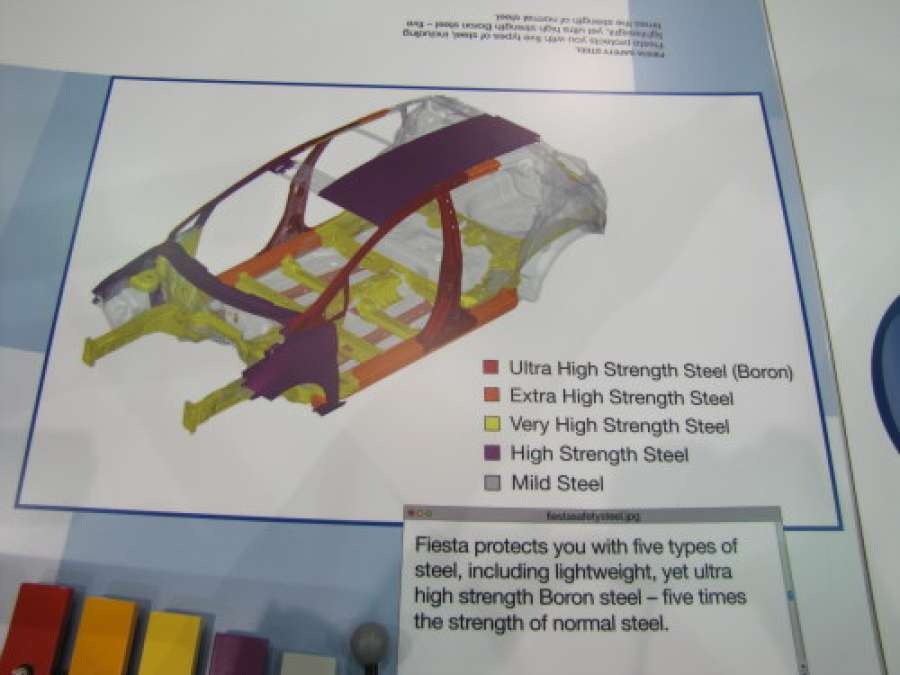Structural themes also permeate automotive design, like this display of ultra-high-strength and boron steels for the Ford Fiesta at 2010 SAE World Congress.
For sure, all exterior design is supposed to move you to want to touch, drive and experience. In the case of Ford, the creases, the swells, the angles, and the folds of the new 2012 Ford Focus’s skin are there by intent. Well, the same goes for the body structures and the choice of materials. They are supposed to make you feel protected, safe and secure.
As you can see, there is more to a vehicle than the outer skin; meaning Ford's kinetic image is supported by rigorous engineering. That is why Ford boasts as much under the sheet metal. For example, a 25-percent increase in torsional rigidity over the current Focus model is due in part to the extensive use of ultra-high-strength and Boron steels in the car’s construction.
One reason for the significant increase in boron steels is, that car must meet widely different crashworthiness standards in all of the global markets in which it will compete. The stiff structure also paves the way for improvements in construction quality, where gap tolerances, panel fits, and color matching, inside and out must meet a higher standard. Ford adds on its website and other PR materials that it is setting difficult standards.
Next to the exterior and the body structure is the interior. To that end, the same rules apply, except they are aimed toward making occupants feel like they’re riding in a car several notches above its competitive class. For the compact class, the Ford Focus uses what it calls, cabin elements that include a soft-touch instrument panel, upgraded trim, high-tech display panels, and modern colors and graphics. Furthermore, Ford has worked to reduce cabin noise for that quieter driving experience.
J. D. Power hosted a preview article of the new vehicle which serves to inform the public early, even before the car show season begins.
The 2012 Ford Focus will nonetheless be shown at the 2011 North American International Auto Show, and goes on sale in early 2011 as a 5-door hatchback or 4-door sedan.
According to the J.D. Power preview, buyers looking for more passenger and cargo space can opt for the 2012 Ford Focus C-MAX, a mini-minivan along the lines of today’s Mazda 5 and which can seat seven people.





